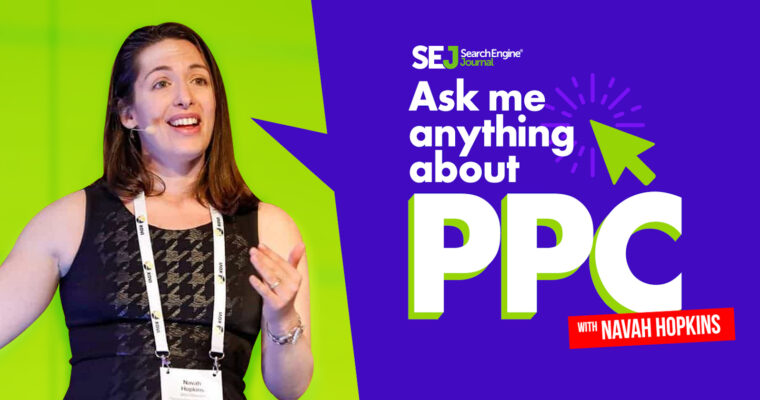There were a lot of great questions during SEJ eSummit around audiences, so this month’s Ask Me Anything About PPC installment is a helpful cheat sheet on:
- What are audiences?
- How do I use them?
- When should you adjust your audience strategy?
Important note: this post will only cover audiences from the Google suite of ad channels.
What Are Audiences in Paid Media?
Audiences are groups of people who have:
- Completed specified actions (remarketing).
- Demonstrated specified behaviors (in-market/custom intent/affinity).
- Opted in to share their contact info with you (customer match).
Currently, these are the available audiences:
- Website visitors: People who come to your site and reach a page, reach one page but not another, or take another custom action.
- YouTube audiences: People who have subscribed to your channel, seen a video/ad, or commented/liked a video.
- In-market: People who have demonstrated that they are actively looking for the product/service you offer.
- Affinity: General interest groupings based on sites visited and searches completed.
- Custom affinity/intent: Uses keywords/URLs to focus on interests or buying intent.
- Life events: Best guesses from searches and sites visited on major milestones.
- Detailed demographics: Self-volunteered information (age/income/gender/home ownership/parent).
- Customer Lists: Emails/location data acquired with the consent of your customers/prospects.
- Similar Audiences: People who seem to have similar traits as those in an existing audience.
It is possible for a person to belong to more than one audience group.
For example, if I:
- Searched for “low-calorie protein bars.”
- Visited sites discussing fitness and nutrition.
- Added protein bars to a shopping cart without checking out.
I’d probably be added to an in-market audience (grocery delivery/sports and fitness), affinity audience (health and fitness buffs), and remarketing audience.
How Do You Use Google Ads Audiences?
There are four ways to apply audiences:
- Target and Observe: Exclusively serve ads to prospects in a given audience.
- Observe: Track performance on a given audience, with the option to bid up/down on it.
- Exclude: Prohibit budget from going to prospects in a given group.
- Ad copy customization: Using “if” functions, swapping out ad copy based on audiences.
The most common use-case for audiences is remarketing, or the nurturing of a prospect to a customer.
Remarketing can be done through:
- Search.
- Display.
- YouTube.
- Discovery campaigns.
Depending on the product/service, there may be longer or shorter audience membership durations.
A good rule of thumb is 60 days for services and 30 for products.
Search remarketing (or RLSA) is especially useful for branded campaigns. You may want to target organic visitors who bounced with specific messaging.
You might also want to exclude folks who have already been to your site so you don’t get flooded with “existing customers.”
Audiences are just as powerful as negative keywords in directing budget towards or away from different market segments.
Depending on your budget and service, you may need to prequalify your prospects.
In-market and custom-intent audiences are great at harnessing your competitor’s budget to prove out whether you want to invest in a user.
However, if you’re not sure, using “observe” can help you prove your prospect persona without limiting valuable volume in the early days of a campaign.
In addition, if there aren’t at least 1000 people in an audience over 30 days, it will be too small to target for search.
Using audiences in ad copy is an efficiency hack to ensure your ads are as personalized as possible without having to invest additional budget.
While these are limited to audience lists you create (as opposed to native ones), they’re still a powerful way to get the most value out of your creative.
Here’s an example of how you would include this in your ads:
{=IF(audience IN(<userlist1>,<userlist2>),text to insert):default text}{=IF(audience IN(returning visitors, cart abandoners),30%):25%}
When to Adjust Your Audience Strategy
Making a change to audience strategy can range from learning period initiating to barely noticeable. It all depends on how they’ve been set up and what pivots are planned.
These changes tend to be high impact:
- Adding in or removing remarketing campaigns or bid adjustments.
- Excluding audiences (especially if they had conversions attached).
- Switching from native Google Ads audiences to Analytics segments.
These changes tend to be low impact:
- Adding an audience on “observation.”
- Excluding an audience that has less than 1000 people in it.
- Creating audiences without applying them.
Making a high impact change during peak profit season could spell disaster.
On the other hand, if performance is low anyway, the high impact change could be just what’s needed.
A great “tell” for making audience changes is if the campaign is limited by budget, but there is no additional budget to invest.
By adding exclusions or audience targets, you’ll be able to focus the budget on ideal prospects.
Ideally, any change will be given at least 2-4 weeks to prove itself out.
Creative changes will likely come in closer to the two-week mark unless the campaign is a low budget one.
Google Ads Audiences Final Thoughts & Takeaways
Cookie based remarketing will evolve over the next few months as ad platforms evolve to meet privacy concerns.
Getting comfortable building prospect personas and using those traits to target budgets and creatives is a crucial skill going into 2021 and beyond.
Using audiences without taking the time to adapt your creative to the given audience is arguably a bigger waste of money than not leveraging them at all.
Be sure to take that important creative step (regardless of whether the creative is for search, display, YouTube, or discovery).
Have a question about PPC? Submit via this form or tweet me @navahf with the #AskPPC hashtag. See you next month!
More Resources:
- 8 Dos & Don’ts of Search Audiences
- 5 Amazing Google Ads Tools You Need to Use
- 10 Important PPC Trends to Watch in 2021
Featured Image credit: Paulo Bobita





